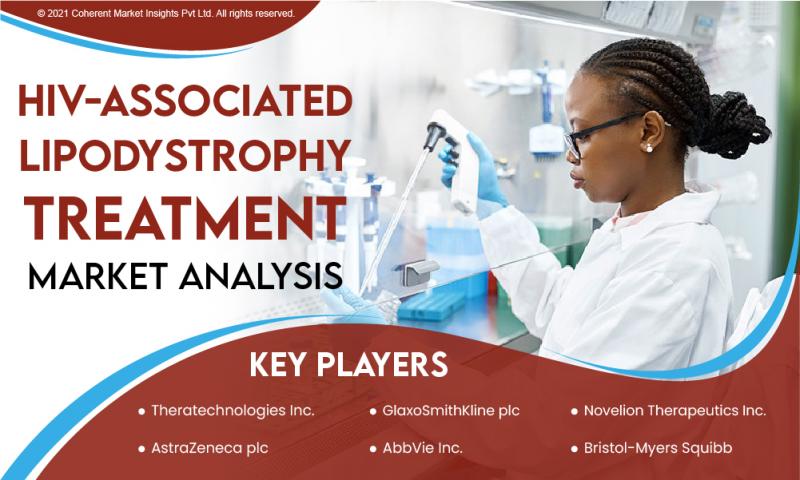HIV-associated lipodystrophy is a condition characterized by changes in body fat distribution, leading to both fat loss (lipoatrophy) and fat accumulation (lipohypertrophy) in individuals living with HIV. This condition has been a significant concern for HIV patients, impacting their quality of life and treatment adherence. However, over the years, there have been remarkable advancements in the treatment and management of HIV-associated lipodystrophy. In this blog, we will explore some of the latest developments in the HIV-associated lipodystrophy treatment market.
Understanding HIV-Associated Lipodystrophy
Before delving into the latest treatment options, it's essential to understand what HIV-associated lipodystrophy is and how it affects those living with HIV.
HIV-associated lipodystrophy is a complex syndrome that can manifest in various ways:
Lipoatrophy: This involves the loss of subcutaneous fat in specific areas of the body, such as the face, limbs, and buttocks. It can result in a sunken facial appearance and prominent veins.
Lipohypertrophy: This refers to the abnormal accumulation of fat in certain areas, typically around the abdomen, neck, and breast region. It can lead to increased waist circumference and the development of buffalo humps.
Metabolic Changes: Individuals with HIV-associated lipodystrophy may also experience metabolic abnormalities, including insulin resistance, dyslipidemia, and elevated blood sugar levels.
The exact cause of HIV-associated lipodystrophy is not fully understood, but it is believed to be multifactorial, involving both the virus itself and certain antiretroviral medications.
Recent Developments in Treatment
Switching Antiretroviral Therapy (ART): One of the primary strategies in managing HIV-associated lipodystrophy is switching to ART regimens with a lower likelihood of causing lipodystrophic effects. Newer generation antiretroviral drugs, such as integrase inhibitors and tenofovir alafenamide (TAF)-based regimens, have shown a more favorable metabolic profile.
Injectable Therapies: Long-acting injectable antiretroviral medications have become available, offering improved treatment adherence and reducing the risk of metabolic complications associated with daily pill regimens. These injectables can be particularly beneficial for individuals with lipodystrophy.
Body Contouring Procedures: For those with severe lipodystrophy-related body changes, various cosmetic procedures like liposuction and facial fillers can help improve their physical appearance and boost self-esteem.
Lifestyle Interventions: Lifestyle modifications, including a balanced diet and regular exercise, play a crucial role in managing HIV-associated lipodystrophy. These interventions can help reduce metabolic abnormalities and improve overall well-being.
Research on Lipid-Lowering Agents: Ongoing research is exploring the use of lipid-lowering agents, such as statins, to address dyslipidemia in individuals with HIV-associated lipodystrophy.
Conclusion
While HIV-associated lipodystrophy market remains a challenging condition, significant progress has been made in its treatment and management. The availability of newer antiretroviral drugs, injectable therapies, and cosmetic procedures has provided more options for individuals living with HIV to address the physical and metabolic changes associated with lipodystrophy. Additionally, lifestyle modifications and ongoing research offer hope for continued advancements in the field, ultimately improving the lives of those affected by this condition.
Read More….
Dental Bone Graft and Substitutes Market
